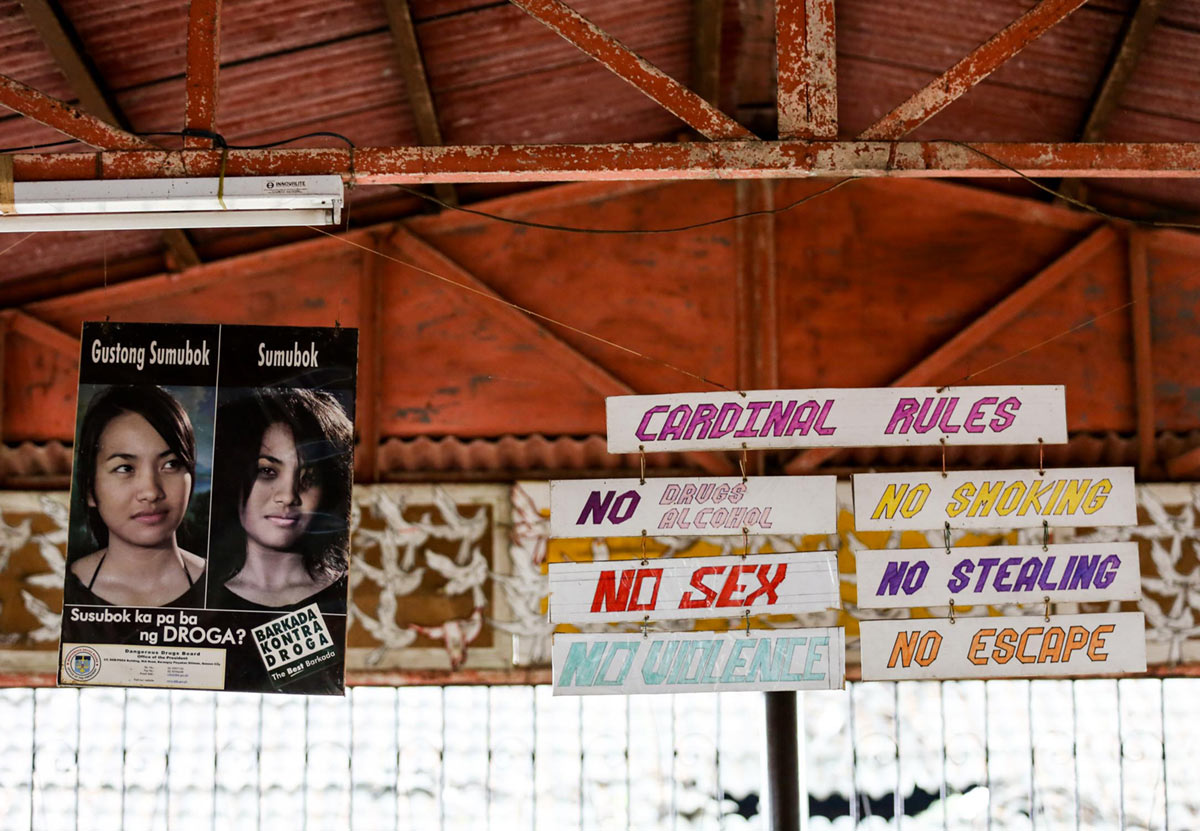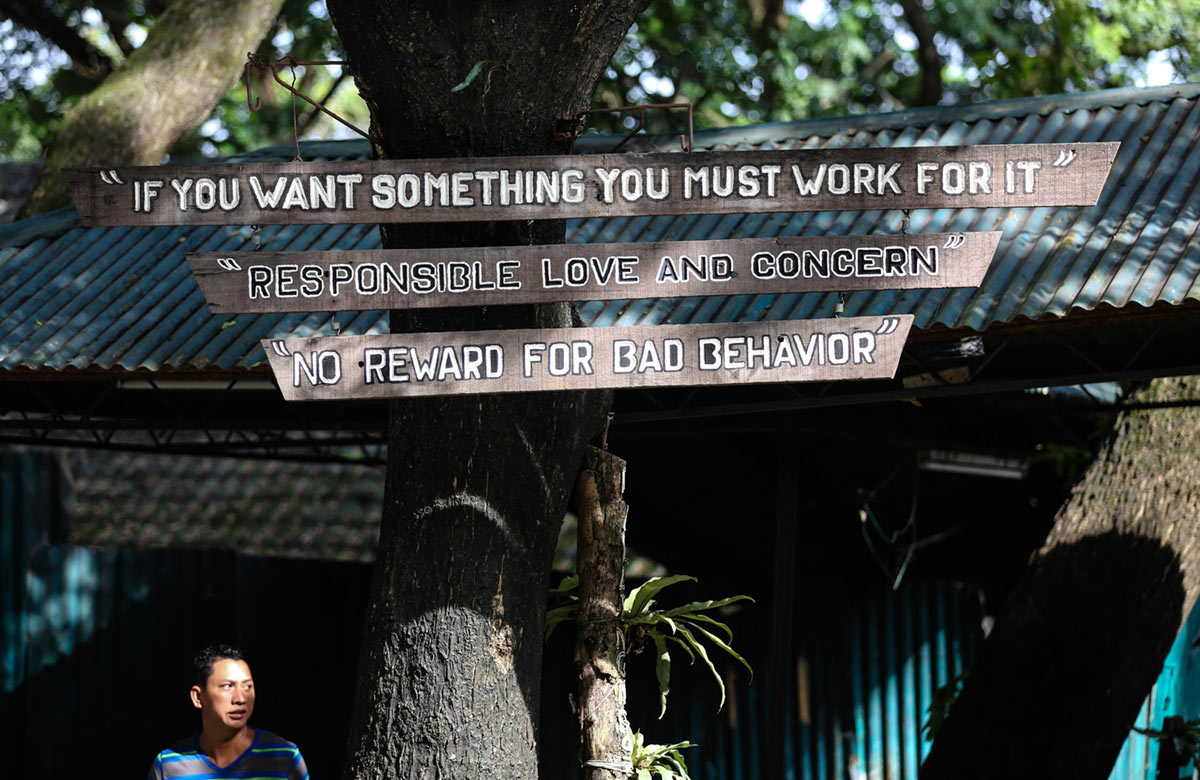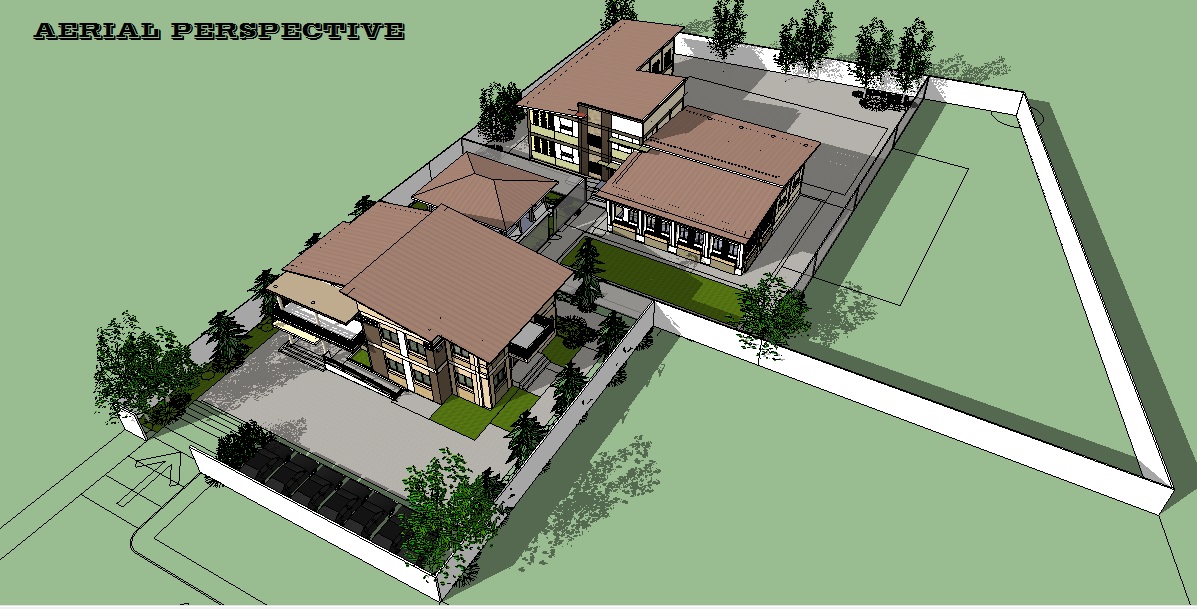When President Duterte’s intensive drug campaign led to a massive number of surrenderers, lack of rehabilitation cities was easily identified as the gap that needed to be filled. Constructing local treatment centers is a big help for poor patients, but not all cities have the funds for it.
At the public Tahanan drug rehabilitation center, a bridgeway connects the green and yellow buildings at the heart of a residential area in Payatas in Quezon City that could easily pass as a school that knows no age.
Dressed in uniform shirts and jogging pants, Tahanan’s residents are busy with their respective tasks for a special day. A 13-year-old boy is beaming as he sweeps the floor with a broom while other young gentlemen are scrubbing the walls. The older males are in charge of checking goods brought in by visitors. The girls, meanwhile, are doing daily exercises. They would all greet visitors in chorus, like obedient students in a classroom.
Sometimes, they are real students, too. An alternative learning system open even to persons with disabilities reminds them there is not a day lost for education. Residents follow unwritten philosophies: If you want something, you must work for it; there is no reward for bad behavior.
Once all the work is done get perhaps the greatest reward of all–to see and speak with a family, a friend or anyone from the outside world they’ve since left behind.
Tahanan’s residents are now living in a controlled environment, but it’s the best option they’ve got to regain control of their lives taken hostage by drug abuse.

Allan, 51, and a recovering drug dependent, knows all too well that option and control are mutually exclusive. When he turned himself in to the Quezon City Treatment and Rehabilitation Center (QC-TRC) three months ago, he was willing to follow the rules of the therapeutic community so he could start anew.
The former nurse is one of Tahanan’s oldest patients and deems the center as a safe haven. “In here, I have a chance to change. I hope when I go out, things are better,” he said.
Allan had never committed a crime. He had never destroyed a life—except his own. He is an old man, having seen his life turn for the worst twice—when he fell prey to methamphetamine or “shabu” for the first time at 23, and when he relapsed after losing his mother.
Now, he’s one of 150 drug dependents receiving free treatment in Tahanan, a quarter of which are minors.
Tahanan is the first DOH-accredited treatment facility for drug dependents that is fully funded and operated by a local government unit (LGU). Since 1993, it has been serving as a residential treatment center open to Quezon City residents. Tahanan is currently under the helm of Quezon City Vice Mayor Joy Belmonte.
But Belmonte admitted that the center is now facing space shortage. Her office had to speed up the processing of additional 150 beds in the center, even if the project is originally scheduled for 2019.
When President Duterte launched an intensive drug campaign, lack of rehabilitation facilities was easily identified as the gap that needed to be filled.
Some LGUs want to follow the initiative of Quezon City to build a local treatment and rehabilitation center. This is despite the national government’s promise to build additional facilities amounting P2 billion. But how badly are these new centers needed?
Drug users who have surrendered to law enforcement are now more than 669,000—a number never before seen even during martial law.
Read: Bato: PNP ‘winning war on drugs’ in Duterte’s first 100 days
The Department of Health (DOH) estimates that 9 percent of the surrenderers require admission to a TRC. But the Dangerous Drugs Board said the figure was only 0.6 to 1 percent, based on the World Health Report. Two to 10 percent would have to go to outpatient care, while the biggest chunk would require community-based interventions.
The DOH also reported that five regions still lacked TRCs due to lack of funding: the Cordillera Administrative Region, MIMAROPA, SOCCSKSARGEN, the Negros Island Region and the Autonomous Region of Muslim Mindanao.
But regions with TRCs aren’t doing much better. Cities in the National Capital Region usually refer their patients to government TRCs outside–in Bicutan, Tagaytay City and Magalang in Pampanga province. But now, all these three are overpopulated.
Among them, DOH-TRC in Bicutan is the first option because of proximity and affordability. But as of September, the facility has already tripled its admission rates. Admission to government TRCs are not free and individual cases require a court order.
Under the Republic Act No. 9165, or the Dangerous Drugs Act of 2002, a subsidized payment scheme under the national government will be created for patients confined in public TRCs under the voluntary or compulsory submission program depending on economic status. LGUs also bear some of the cost.
Andres Altarejos, Parañaque City’s antidrug abuse council (Adac) officer in charge, said one of the major causes of drug addiction relapse was the family’s lack of financial means to pursue a patient’s treatment. The average cost of treatment for six months is P16,500.
Taguig City Adac head Ben Canela took a step ahead. He proposed that P15 million from their Adac’s 2017 budget be used to cover documents, admission and monthly fees in DOH-TRC in Taguig of 500 drug users from their city.
In Valenzuela, spending increase for rehabilitation assistance is inevitable. Its Adac chair and councilor, Antonio Espiritu, said the local government would have to pay for 3,200 reserved beds in Pampanga province over the next six months, which will amount to P8 million. It’s a new kind of spending that they now have to take from their health budget.

While constructing local TRCs is a great help for poor patients, not all LGUs have the capacity for it. Some think it’s not even the best option, and could be a kneejerk reaction.
An old, dilapidated building currently serves as holding and diagnostic center for drug dependents in Parañaque, shared with children in conflict with law. But Mayor Edwin Olivarez is now looking forward to a new 60-bed TRC by year’s end.
Caloocan took a similar step. Construction of city’s TRC will commence next year, with P100M budget.
But the new centers and rehab spaces will not be operational until the health department has issued a certificate of accreditation—and the process is rigid and costly.
“I always have to explain that [drug] addiction is primary a sickness… and a rehab center is like a hospital and the standards have to be high,” said Belmonte.

Maintaining a TRC is also a question of sustainability, especially because professional staff needs to be continuously trained to achieve the health department’s standards.
This is exactly the reason why Pasay Adac chair Dan Alfanoso III and Navotas Mayor John Tiangco shrugged at the possibility of building a local TRC.
“We opted instead to build a recovery center with out-patient services in existing facility that can be refurbished. We don’t have the land and fund to build infrastructure for rehab centers,” said Tiangco. The recovery center’s budget is P15 million.
For them, building and maintaining a rehab center is costly. Community-based programs--interventions of LGUs for patients outside a residential rehab center--are deemed more feasible and more urgently needed, a sentiment that the DDB has echoed.
Read: Rehab or Rubout Part 1
READ: Rehab or Rubout Part 3
READ: Rehab or Rubout Part 4
Note: Three months after President Duterte first announced his all-out war on drugs, former and current drug dependents are faced with only two choices: be rubbed out by either police or vigilantes, or be rehabilitated by centers and doctors ill-prepared to cater to the overwhelming influx of drug surrenderers. The Inquirer shines a light on the latter choice in a four-part special report running from Oct. 6 to 10.